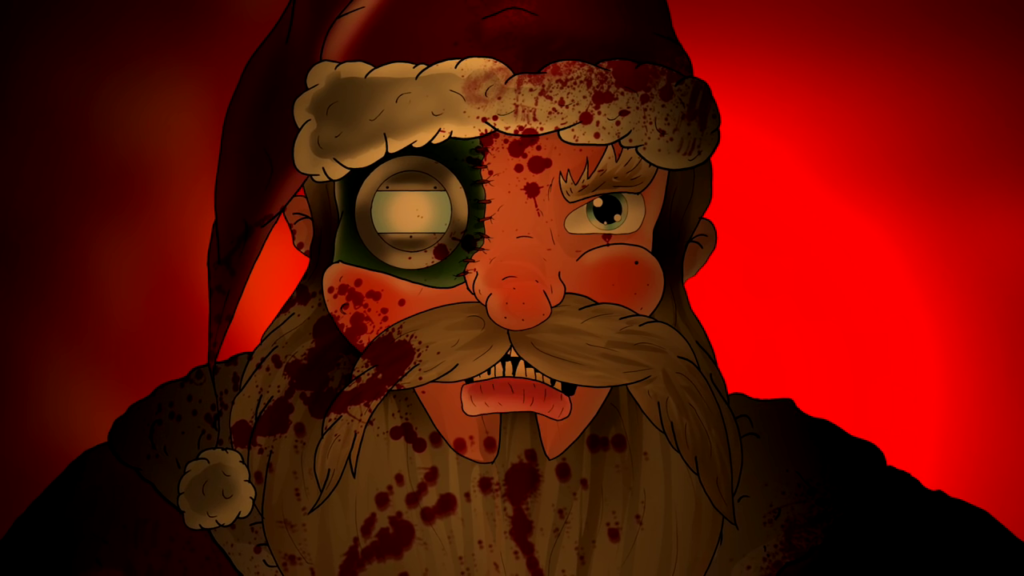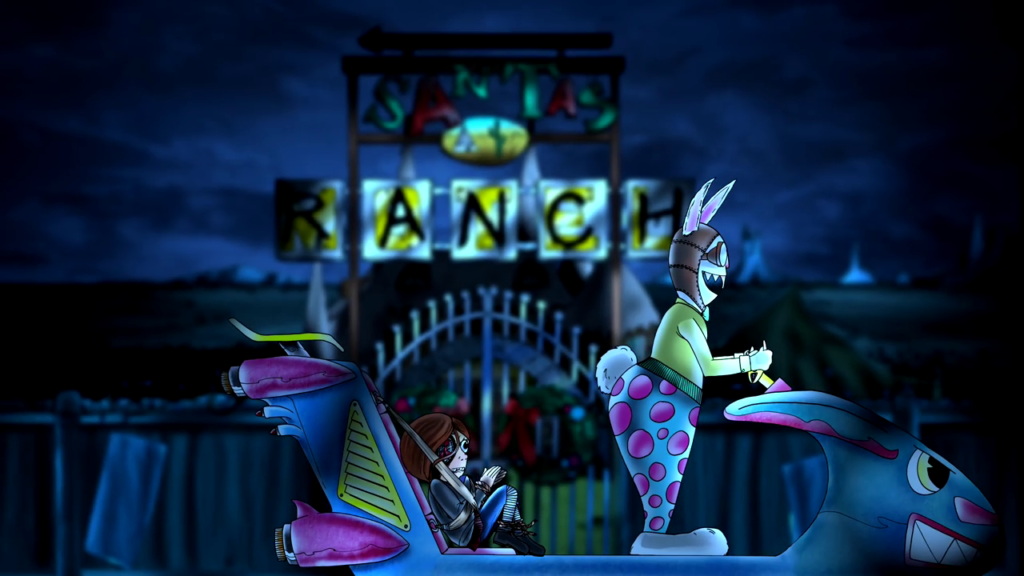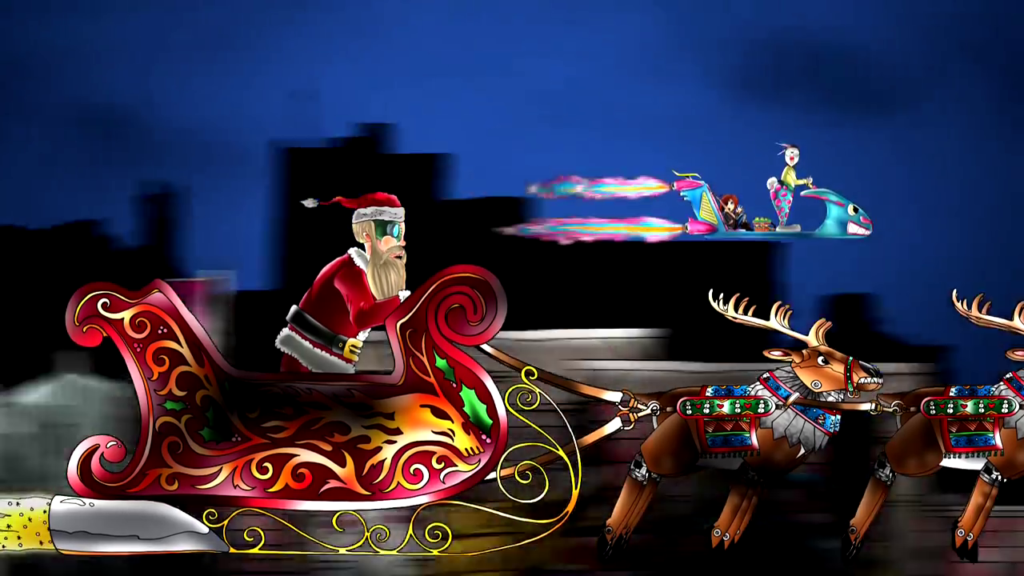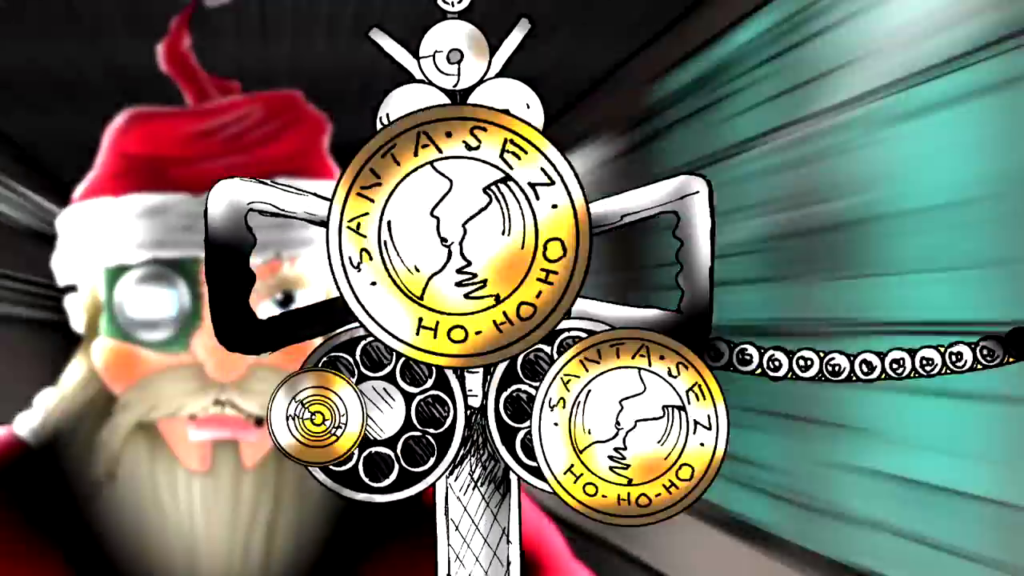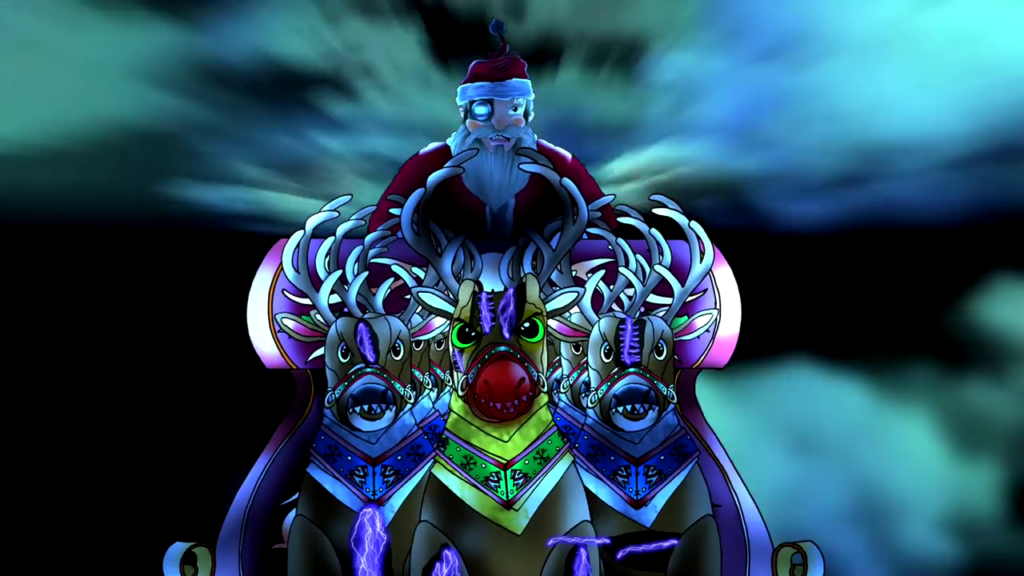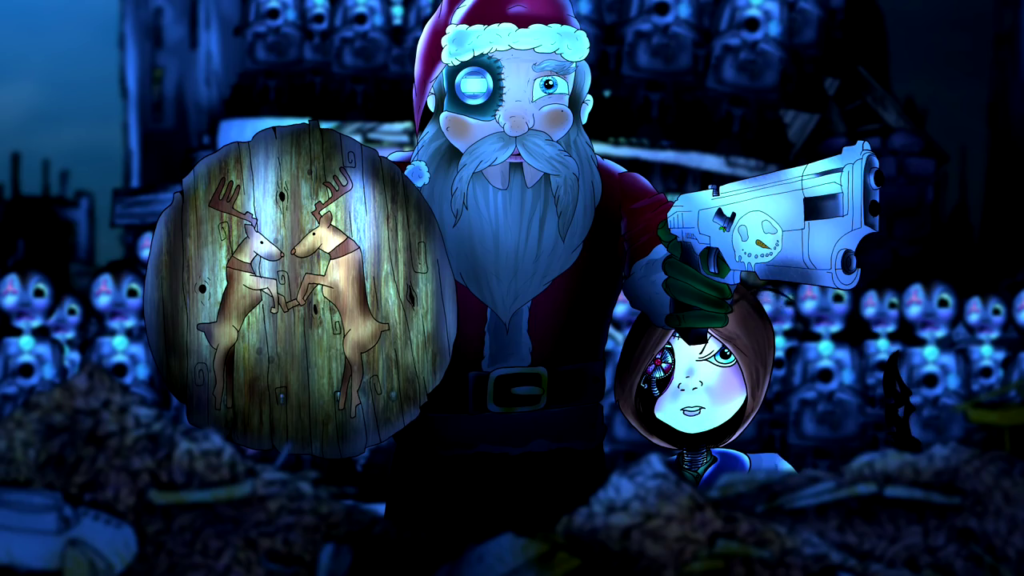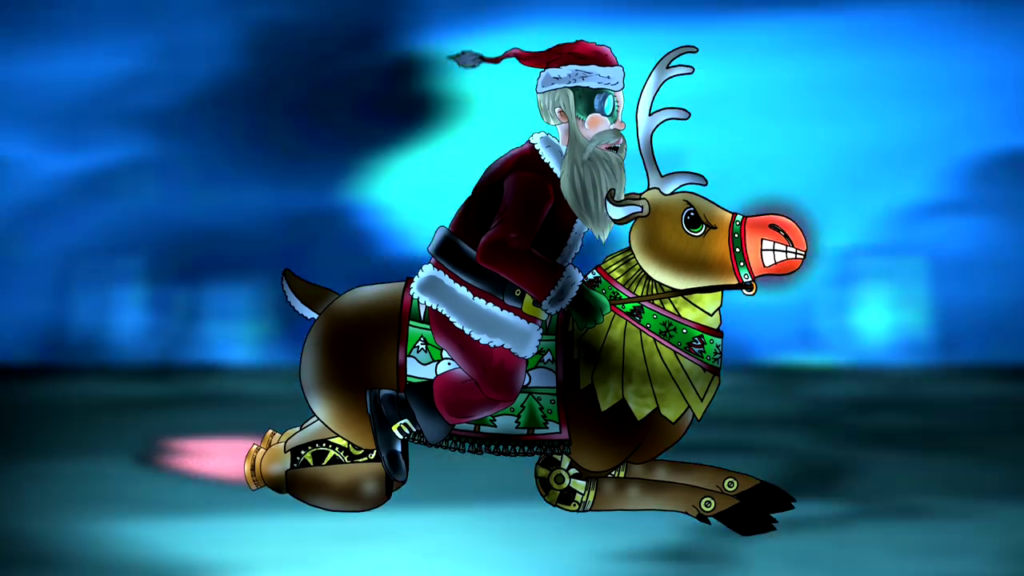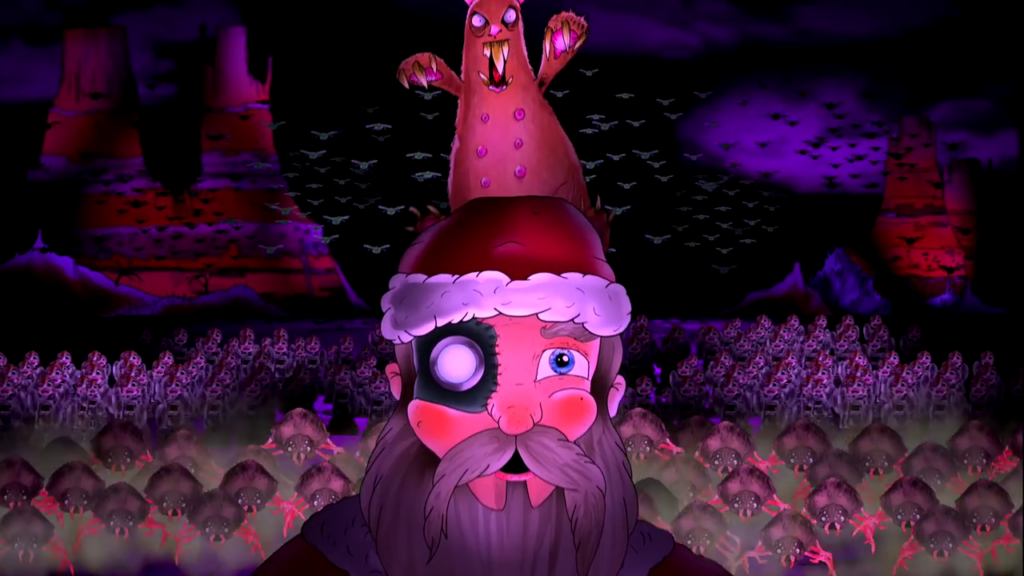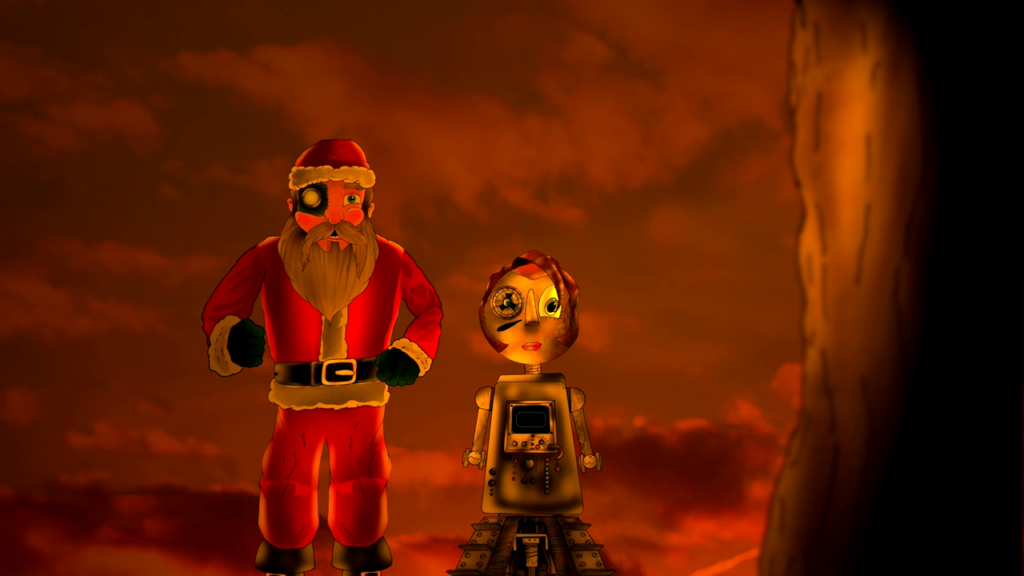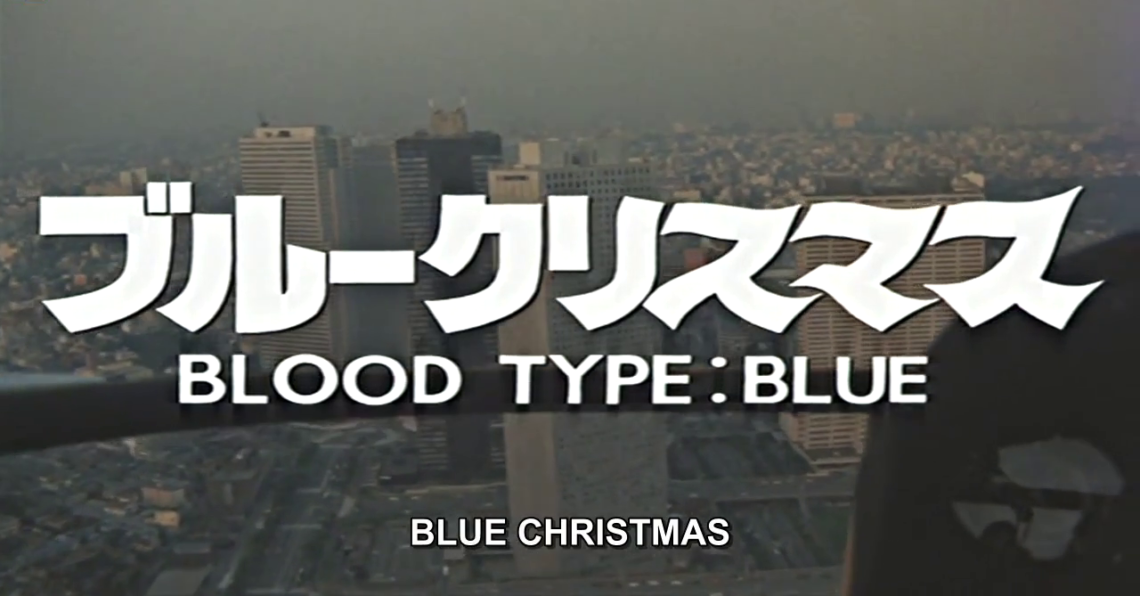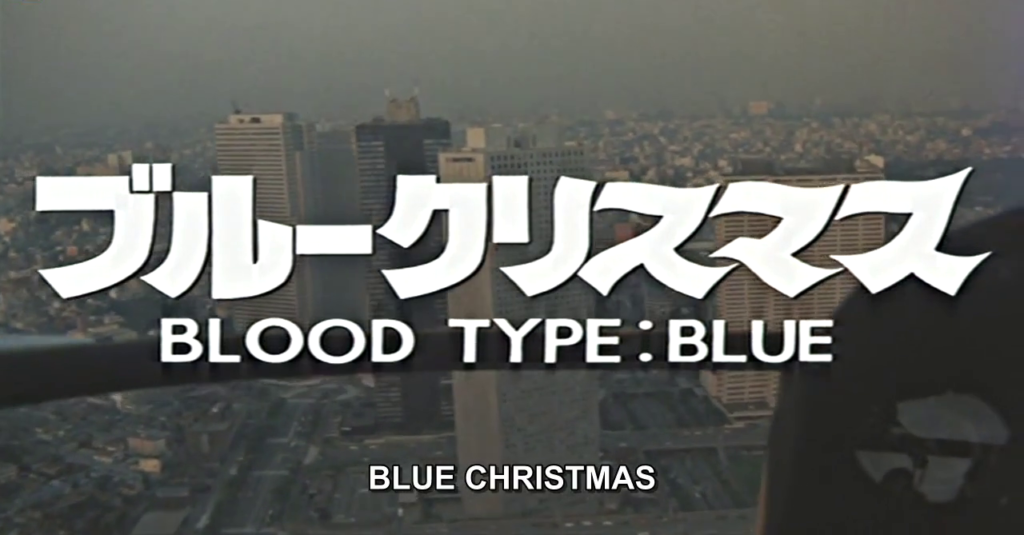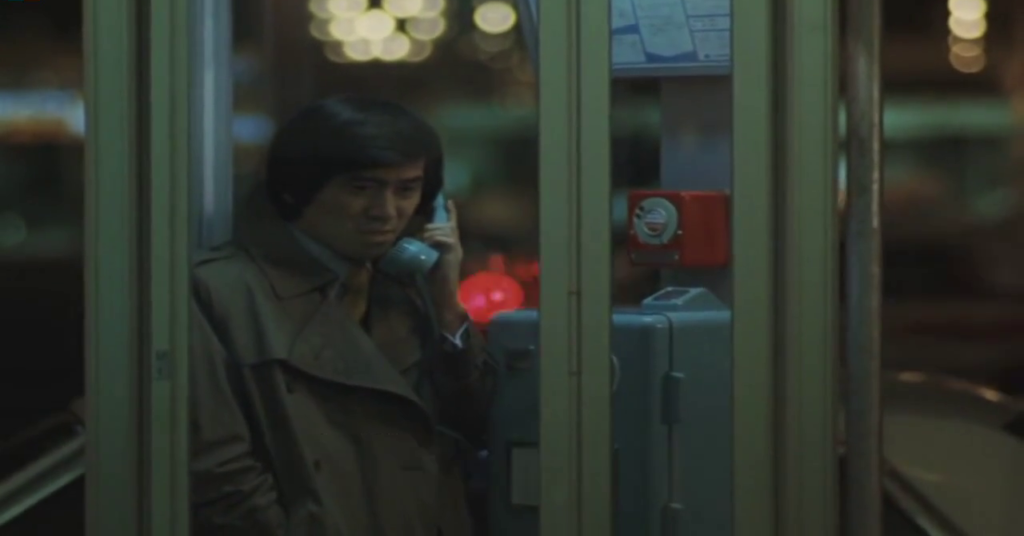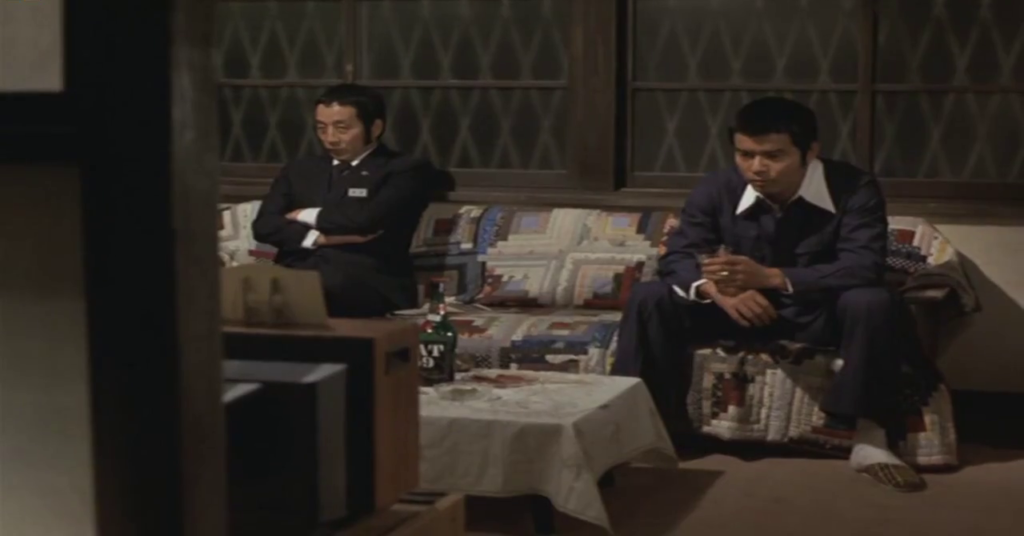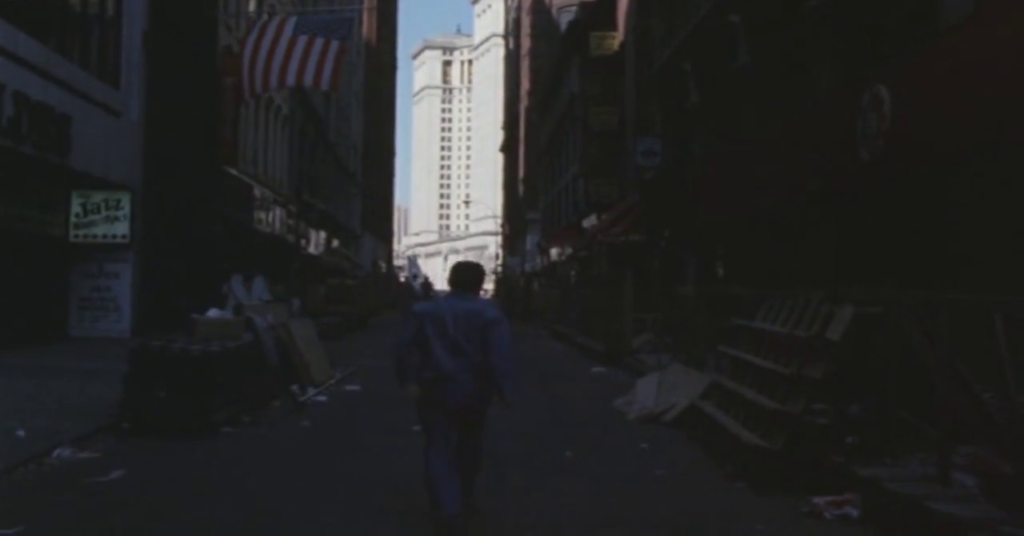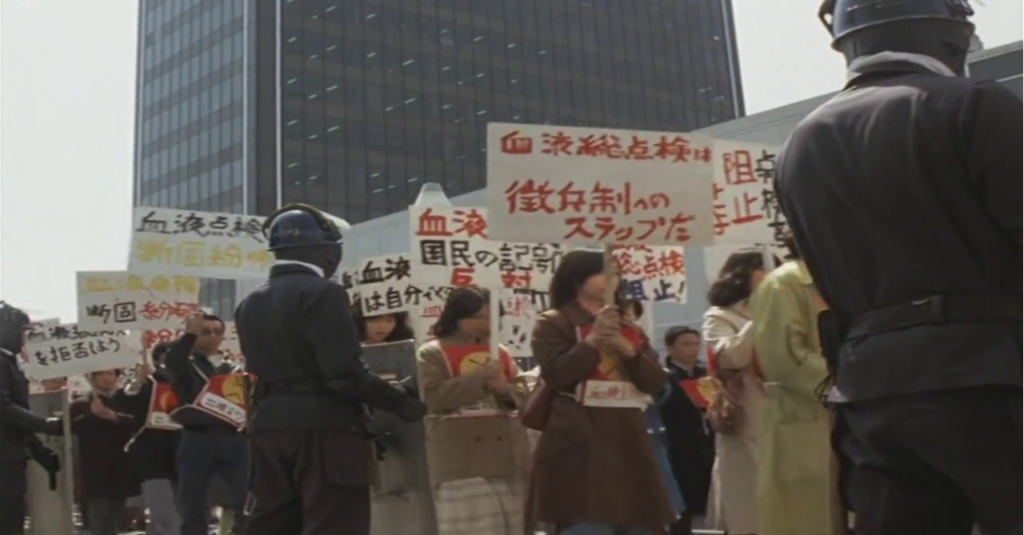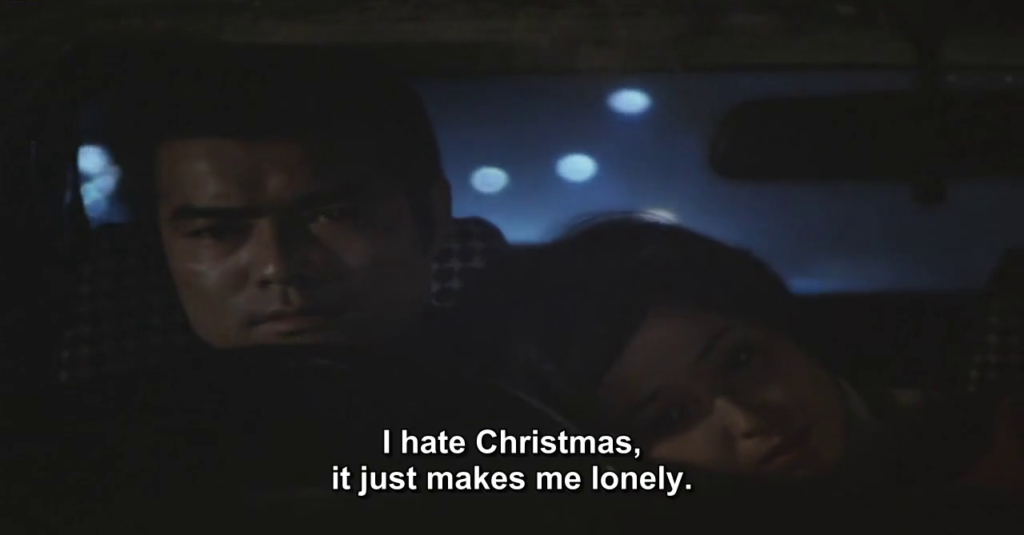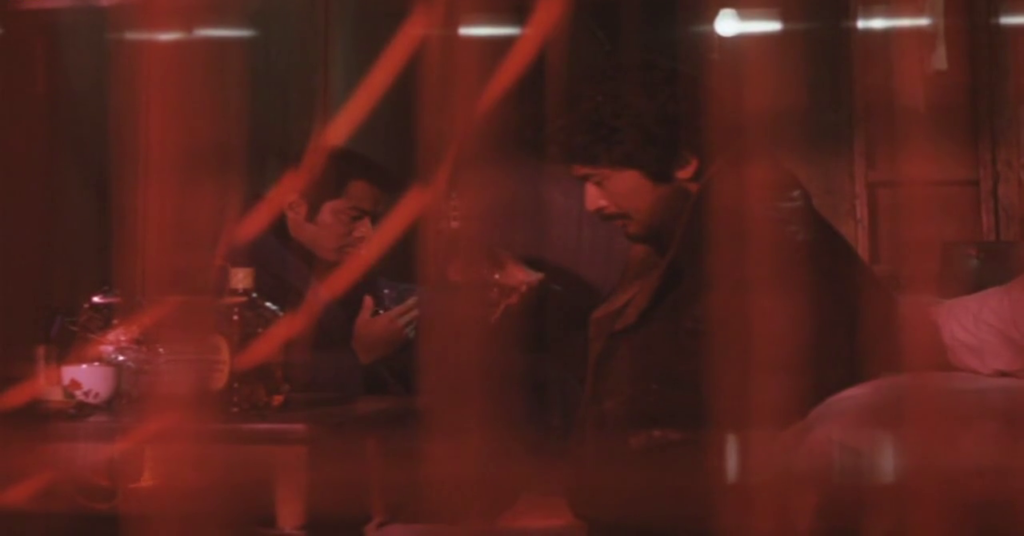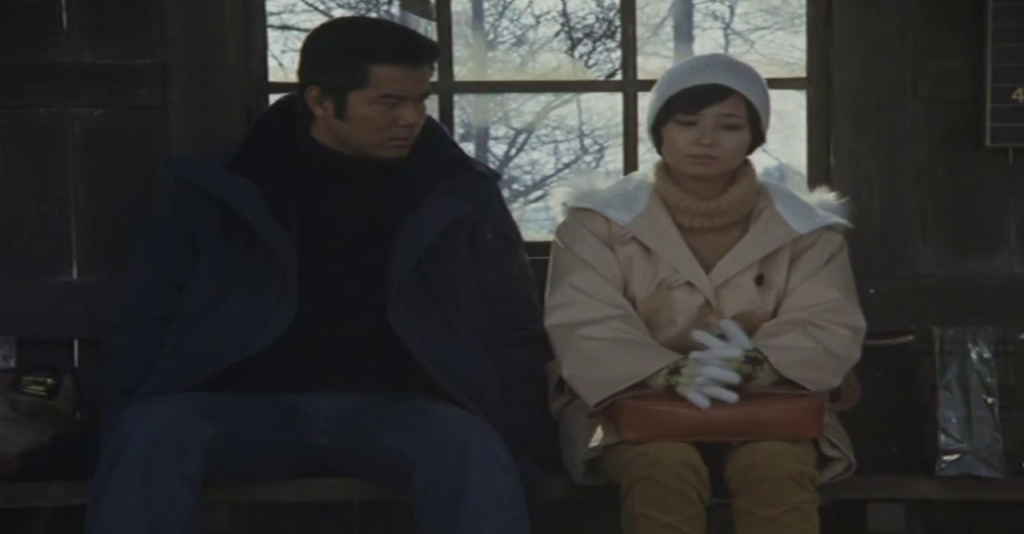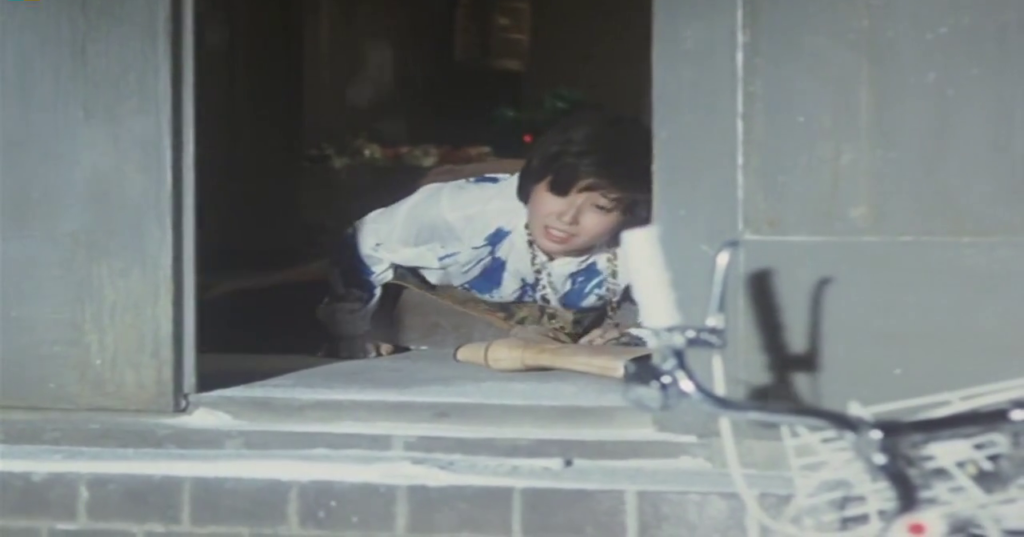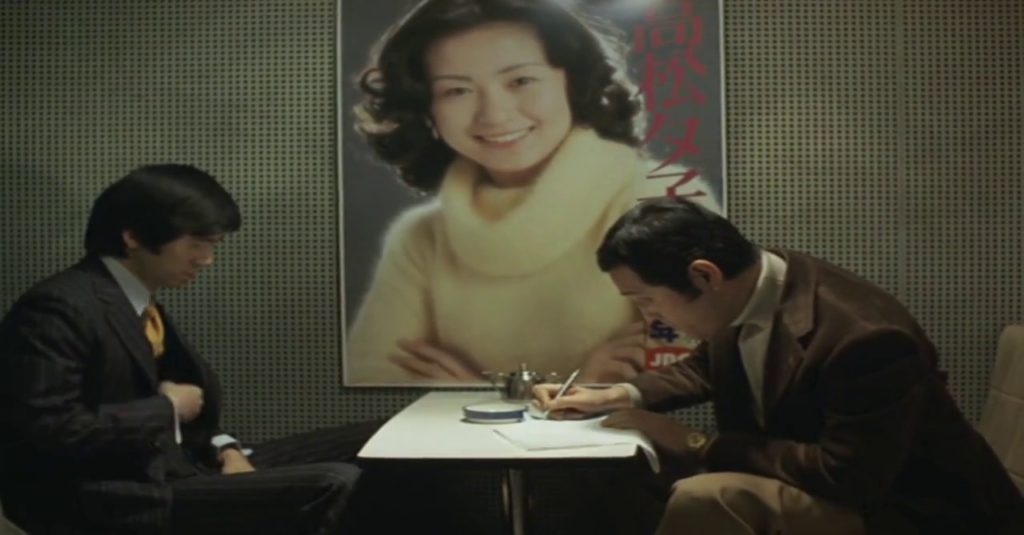-
#434 – Infinite Santa 8000 (2013)
Infinite Santa 8000 (2013)
Film review #434
Director: Michael Neel
SYNOPSIS: A thousand years after humanity has destroyed itself, all that remains in the world is a host of mutants, robots and monsters…and Santa Claus, who has to survive by killing these monsters. When evil scientist Dr. Shackleton comes for Martha, the little girl that Santa has been taking care of, he sets on a rescue mission and to blow up any creature or killer robot that gets in his way.
THOUGHTS/ANALYSIS: Infinite Santa 8000 is a post-apocalyptic Christmas action film (I think that’s the best way to describe it). The setting is a post-apocalyptic world a thousand years after humanity has destroyed itself, leaving the Earth populated by mutants, monsters and killer robots of all persuasions. One survivor of the old world though, is none other than Satna Claus, who we see in the opening scenes in an arena fighting to the death against a creature to earn some scraps of meat. Victorious, he returns to the “North Pole ranch” to et with Martha: a young girl he rescued at some point. However, the evil scientist Dr. Shackleton sends the Easter Bunny to kidnap Martha and return her to him, and with that begins Santa’s crusade against the horrors the post-apocalyptic wasteland. The story of the film is very simple: Santa stopping Dr. Shackleton and dismembering everything in his way. The appeal of the film is not in its compelling narrative, but in the sheer absurdity of its concept of having Santa murder everything and anything in a post-apocalyptic wasteland. Nevertheless, the film does take itself fairly seriously, and perhaps surprisingly does a good job of depicting a bleak and hopeless world and having Santa being the only one with any sense of hope and joy. Nevertheless, there’s still plenty of over-the-top fights and action scenes that maintain a sense of momentum throughout the film. I mean, who wouldn’t want to watch a cyborg Santa chase down and fight a mutant Easter bunny? If I had to identify a weak point, I would probably cite the dialogue, as it often lacks either the energy, or the humour to make a huge impact. There’s times when you expect Santa to deliver a Christmas-themed one-liner before he dismembers somebody, but what he comes out with always feels like it comes up a little short on having the necessary impact.
The main character of Santa Claus probably needs no introduction: He’s the same bringer of festivities you know, except he is mostly a cyborg now and hacks monsters to pieces. There’s enough of a twist on the familiar concepts as well, such as the North Pole being a ranch out in the wasteland, and his reindeer being jet-boosted robots themselves (Also Rudolph is named Randolph in this version for some reason). Martha plays a familiar role of a young, innocent child that serves as the last vestige of humanity in the post-apocalyptic wasteland, and also the means for the main character to regain their humanity in some way. Given that the main character is the literal embodiment of joy and goodwill, the whole plot between Martha and Santa is fairly predictable. Nevertheless, it is still executed quite well, as we see how Santa lived through the end of the world and thought all the joy and good from the world had gone until he met her. The character designs across the board are quite intricate and full of detail, showing off the horrific mutations and augmentations that the creatures of this world have ended up with, which gives the film a definite visual appeal.
The animation and design of this film are definitely worth mentioning. As mentioned, the character designs are intricate and a decent amount of detail, which emphasises the grotesque, inhuman mutations of the creatures that roam the world. Most of the characters are still images that over across the screen in various ways to give the illusion of movement, perhaps similar to what you would see in South Park, for example. However, there is some very clever techniques used to make them move and give them a definite sense of momentum. For example, the chase between Santa and the Easter bunny maintains a serious sense of high speed and energy. In the slower scenes however, the limitations of the animation are more apparent. Fortunately, the film knows to focus on the action, and that’s what you’ll remember coming away from it. The heavy metal soundtrack also gives the film a similar high energy, and everything seems to blend together pretty well. Overall, Infinite Santa 8000 fulfils the ridiculous concept it proposes, while also clearly being a labour of love that has plenty of effort and consideration put in to make it a coherent and visually appealing experience. It has a number of shortcomings, but it certainly exceeds any expectations you may have going into it.
-
#278 – Blue Christmas (1978)
Blue Christmas (1978)
Film review #278
Director: Kihachi Okamoto
SYNOPSIS: Dr. Hyodo addresses a science conference saying that aliens are visiting Earth, which causes an uproar. Shortly after, Hyodo disappears, and reporter Minami is put in charge of investigating what has happened to him. Meanwhile, people across the globe who have seen aliens seem to have their blood colour change from red to blue. This leads to a distinction between those with red and blue blood, and the world governments doing whatever they can to suppress and get rid of those with the blue blood.
THOUGHTS/ANALYSIS: Blue Christmas (Also known as Blood Type: Blue or The Blue Stigma) is a 1978 Japanese science-fiction film. The film’s story essentially centres around the premise that people across the globe are seeing alien ships, and when they do, their blood inexplicably turns blue. As this phenomenon is happening across the world, the film features a large cast who are all responding to the crisis differently, although the film is primarily split into two halves, each focusing on a specific character. The first half mostly centres on Minami, a reporter who is given the task of investigating the disappearance of Dr. Hyodo, who had warned about the appearance of the aliens, only to be met with scorn from the scientific community. As Minami continues his investigation, he starts to uncover a link between the blue blood phenomena and Hyodo’s disappearance, as various powers are trying to supress the existence of such blue-blooded people as much as possible. The film’s plot is very dialogue-heavy, and there is a lot of switching between characters to give the impression of the scale of what is happening. It builds complexity and intrigue, which keeps the viewer engaged, but it doesn’t necessarily go anywhere: but that’s not really a bad thing, and in truth, that’s the point the film is trying to make…
As the film progresses, the governments of the world introduce increasingly robust measures against those who possess blue blood; covertly killing them off, and when their existence cannot be denied anymore, start to issue propaganda citing that there is no way of knowing what danger they may pose i the future, allowing them to present policies such as shipping them off to camps to the public with approval. As you may be able to work out, this film is a big metaphor for fascism, and the attempted removal of those who are different or impure so they do not “contaminate” everyone else. There is at one point a TV documentary about Hitler and WWII shown in a scene just in case the similarities weren’t apparent enough. It’s not a complex analogy of fascism that explores its roots, effects and any other issues, and for that I think it makes a surprisingly decent portrayal of it. By this, I mean the simple fact that the only distinction between the two people is the colour of their blood: nothing else…there is simply no threat or danger that can be discerned from this (in fact, those who have blue blood seem to have a much more calm disposition, and their anger and hatred have vanished since their alien encounter), and the fact that there is no rational foundation or basis for discrimination or fear is precisely a definition of fascism: that it creates an “other” that is deemed dangerous and a perceived threat so that people will gladfully accept any measure to get rid of them.
The first half of the film, told primarily through Miname’s investigation, looks at how fascism emerges from the separation of red and blue bloods, and how people respond to it. The second half of the film deals more with a human story of two people caught in the middle. Military soldier Oki starts a romantic relationship with Saeko Nishida, a hairdresser, only for Oki to find out that she has blue blood. He continues seeing her, but the government is fabricating an attempt by blue bloods to overthrow the government, which they will use to justify enforcing tougher measures against them. Oki is assigned to kill Saeko, which he does out of mercy for her, before turning his gun on the other soldiers, so they kill him. I don’t think there’s too much that stands out in this love story between two sides of a divide; it plays out as you would expect, and offers no real surprises. It’s done decently, but nothing remarkable. Another interesting fact is that we never actually see any of these aliens; only in one scene do we see still shots of vague alien ships. This again reinforces the heart of the film that it is not an outside force which divides people, but their own fears about wht is different. Overall, Blue Christmas is a decent film, which delves into the power of fascism with an understanding of its complexity and operations. The film is shot with skill, and the variety of locations gives the impression of a global problem which affects everyone. The story is not overly remarkable, and there’s nothing too memorable about it, but it is an interesting dive into the human condition and what causes rifts in society, and it is explored with a great amount of thought and care, which makes it an interesting watch, although there are plenty of films which explore this subject matter (especially in science-fiction) in a more structured way.


